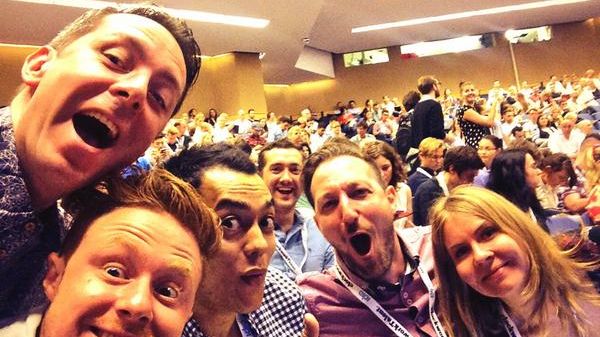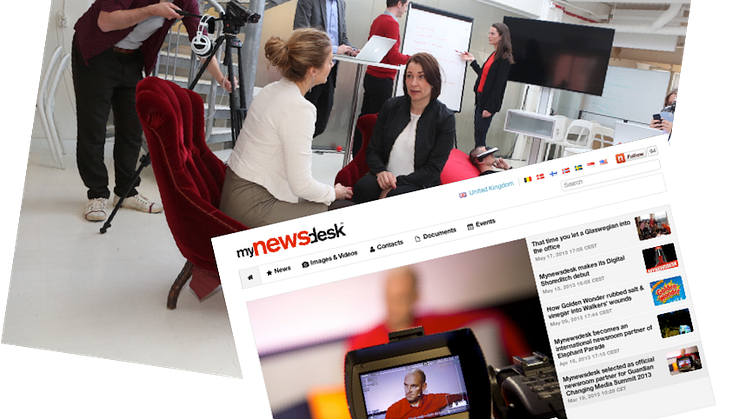
Blog post -
Does native advertising have a future?
Marketing trends come and go, either evolving into tried-and-tested practices or disappearing in a sea of toe-curling buzzwords (QR codes, anyone?). Few break into the mainstream beyond our little marketing & communications realm but this is exactly what happened last week.
During his weekly half-hour chat show, John Oliver spent 11 minutes criticising this year’s hot marketing topic, native advertising.
Equally funny and scathing, Oliver accused media outlets of blurring the lines between independent journalism and advertising. He argued that readers find it difficult to distinguish between a “real” article and a native ad, and marketers that defend this practice are essentially peddling “repurposed bovine waste”.
What is Native Advertising?
Despite its recent rise to the top of marketers’ minds, this branch of content marketing has been around for a while and is present in pretty much every form of media.
Remember advertorials in print, product placement in films, or even promoted tweets and suggested posts on Facebook? Just different types of native ads really.
No one can fully agree on a definition, but the one type that’s increasingly under scrutiny is the branded article: an article that at first glance looks like a genuine piece of journalism, but is discretely marked as advertising or sponsored content. Like this controversial example in The Atlantic: 
So what’s the big deal?
People can still see that it’s an ad, right? Well, according to the study Oliver quotes in the clip, apparently not.
And isn’t that actually the point of native advertising, regardless of which type we’re talking about? It’s a disguise designed to create a so-called seamless reading experience. Or, as Tom Foremski puts it in a recent article:
“It makes the paid content look as if it were produced by an independent third party — the media site itself. It is because readers trust content produced by the publisher but they don't trust paid content. It's plainly dishonest.”
Separation of Church and State
Unlike separated advertorial inserts or often obvious product placement in Hollywood films, native advertising like the The New York Times example below risks violating two essential ideals we hold dear:
1. Journalism must remain impartial and independent
2. Brands must earn people’s trust by being honest and open. (Notice the tiny Netflix and Orange is the New Black logos at the top of the article)

If advertising and journalism start occupying exactly the same space, how can publishers and brands expect people to trust what they’re reading is authentic? How can they expect them to be loyal consumers and customers? Simply put, they can’t.
As Contently’s June 2014 survey indicates:
Two-thirds of readers have felt deceived upon realising that an article or video was sponsored by a brand.
54% of readers don’t trust sponsored content.
59% of readers believe a news site loses credibility if it runs articles sponsored by a brand.
These results are reflected in Tom Foremski’s article, as he concludes that “people become less trusting of the things they read and start to suspect that all media content is corrupt in some way. If they can't figure out who to trust it becomes a big problem for society.”
This also defeats the high-level purpose of content marketing in the first place. Instead of earning loyalty and becoming an authority, brands could find themselves breeding mistrust.
So, now what?
I fully understand that media outlets must find an effective way of making money and this type of native advertising seems promising. Also, I firmly believe that companies have stories to tell their audience and that they need a platform for sharing these. I certainly don’t fault brands and publishers for trying different methods.*
But deception cannot be the solution. In the same report Oliver mentions, results indicate that people are receptive to sponsored articles, provided they are relevant, authoritative, and authentic. However, this is mainly true if the brand and the publisher fit together topically, if the brand is already relatively established, and if the sponsored articles are clearly marked.**
Long live content marketing!
In other words, tell a story people want to read and be honest of its purpose. Show yourself as the creative genius behind your own stories!
In his article predicting the end of native advertising, Kirk Cheyfitz says “a brand must be known as the provider of such content so audiences will see the brand as trusted ally, valued adviser, and inventive entertainer.”
Like Cheyfitz and Foremski, I’m sounding the death knell for native advertising too. At least for the kind that tries to trick readers into believing it’s something other than advertising. I think some native ads can work to an extent, but I’m much more in favour of content marketing methods where brands retain full control of the social channels, websites, and services they use to share their stories. Context is as important as content!
As Cheyfitz says: “No sane brand would spend money [on creating] great content only to let some publisher or broadcaster get the credit.”
By Mike Rooseboom, Product Marketing Manager, Mynewsdesk
*Mynewsdesk has experimented with various types of native advertising on several occasions, as well, though it was more like putting our logo around content related to our industry.
**Full disclosure: the survey was conducted by the IAB and Edelman Berland, but sponsored by TripleLift, an online native advertising service. Told you it was everywhere!







